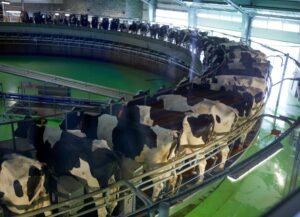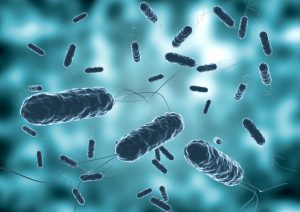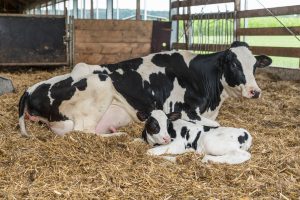Maria Villagrasa & Nuria Garcia
Bovine paratuberculosis, also known as Johne’s disease, is a pathology caused by the bacterium Mycobacterium avium subsp. paratuberculosis (MAP), which is characterized by chronic intestinal injury.
It’s a disease distributed worldwide with a considerable economic impact on production due to its negative consequences on milk yield and the greater predisposition to the development of other pathologies or lower the commercial value of animals. The infection is mainly transmitted through the contact through feces between animals and by contaminated colostrum or milk intake from an infected animal.
The presence of MAP in milk and dairy products is a food safety concern due to its possible relationship with various human diseases, such as Crohn’s disease or type 1 diabetes. Therefore, detecting MAP in milk and slaughtering animals that excrete MAP can help improve consumer safety.
This can be achieved by detecting infected animals in the herd with a specific, sensitive and economically viable test. However, none of the MAP infection detection methods currently available are 100% sensitive or specific. Therefore, the identification of cows excreting MAP should be based on a combination of methods.
One method consists on the direct identification of the pathogen either through bacteriological culture or the identification of genetic material. With regards to the detection of genetic material, on-site hybridization and PCR testing are the most used options in the samples studied, including milk, feces or animal tissues. The sequencing of the complete MAP genome has allowed the identification of different biomarkers for the diagnosis of the infection, mainly the IS900 fraction.
According to the recommendations of the World Health Organization, cases of paratuberculosis should be recorded, although in some countries, such as Poland, there is no disease control program, so it is possible to move MAP infected animals between countries.
Partial results of seroprevalence assessments in available Polish dairy herds indicated that there are significant differences in terms of MAP incidence in cows depending on the size and location of the herd, as well as the origin of the animals. Similarly, considerable differences in the prevalence of MAP have been observed in 13 European countries.
The objective of a study conducted in Poland (Szteyn et al., 2020) was to compare two methods of MAP detection: direct isolation of DNA and culture in individual and grouped milk samples. It was also determined the frequency of occurrence and differentiation of isolated MAP types of milk samples from a low seroprevalence herd.
The research was carried out on a herd of crossbred-dairy cows in an area with endemic paratuberculosis (Żuławy Wiślane, northern Poland). Most animals (72%) of the herd were imported; the remaining 28% were raised on the farm. Blood (10 ml) and milk (100 ml) samples were collected from 321 cows of at least 2 years of age in which the ELISA paratuberculosis test was performed.
According to the results of that test, the milk samples were divided in two groups:
- Seropositive animal samples (11 individual samples)
- Seronegative animal samples (combined in groups of 5, resulting in 62 clustered samples)
Milk samples were analyzed to determine the presence of MAP (by culture method) and the MAP characteristic IS900 sequence (by direct isolation of genetic material from milk).
More positive results were detected through cultivation
Animal serum tests indicated that the seroprevalence of the herd for paratuberculosis was 3.43%. Suspicious colonies were observed by the culture method in 100% of individual samples and 56.4% of the combined samples.
Subsequently, a PCR was performed confirming the presence of the IS900 fragment in 63.6% of individual milk samples and 24.1% of the combined ones. Moreover, the presence of IS900 in genetic material isolated directly from samples was confirmed in 100% of the individual samples and 20.9% of the combined samples.
Thus, for combined milk samples, more positive results were detected by culture than by direct DNA isolation (24.1% and 20.9%, respectively). These results are comparable to those obtained in other studies. However, more positive samples with PCR were detected in other experiments. Prior evaluation of the methods used in this study revealed a sensitivity of 63.6% for cultivation and 75.0% for PCR, and specificities of 89.4 and 74.3%, respectively.
Identifying and determining the type of MAP
Attention should be paid to the animal origin when developing a strategy to detect cows infected with MAP since there may be different types of MAP responsible for the infection. The type of Mycobacterium avium ssp. paratuberculosis can be identified and determined. using different techniques.
Two methods were used in this study: a multiplex PCR and a PCR-REA. Both methods indicated the presence of two types of MAP: type C (isolated mainly in bovines) and type S (isolated mainly in sheep). Type C was present in 89.1% of milk samples and only 10.9% of strains were identified as type S, results that agree with previous experiments which showed that most isolated strains of cattle herds in Europe were type C.
Detection of genotypically different MAP strains in a herd suggests the existence of different sources of infection, so it can help trace the source of such infection.
On the other hand, type S was detected only in the genetic material isolated directly from milk samples as it is difficult to grow it in a culture for identification tests. As a result, it is recommended to use isolated DNA directly from milk samples with PCR-based methods.
Conclusion
Information on the types of MAP found in herds with low seroprevalence can help determine the origin of the pathogen, which is important if there are animals from different regions or countries in the herd.
It is recommended to use the isolated genetic material directly from combined milk samples to achieve a rapid diagnosis, identify MAP types and track infection, without the need to sequence the entire genome.
Reference
Joanna Szteyn, Agnieszka Wiszniewska-Łaszczych, Joanna Wojtacka, Beata Wysok, and Katarzyna Liedke. Short communication: Occurrence and differentiation of Mycobacterium avium ssp. paratuberculosis (MAP) strains from milk of cows from herd with low prevalence of MAP. 2020. J. Dairy Sci. 103:8526–8529.
© 2020 Dairy Knowledge Center. All Rights Reserved.










